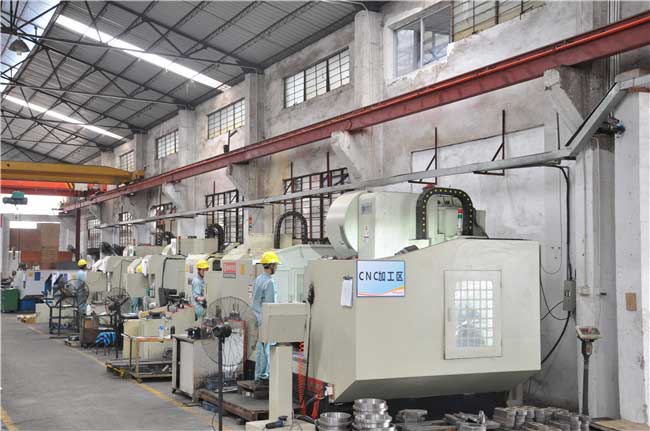

Coal Sheet Automatic NC Feeder / Metal Coil Processing Equipment
1. electrical aspects: servo motor or drive failure, the reasons
are
(1) When the NC feeder is reinstalled, the drive or motor is subjected to illicit
collision;
(2) The servo motor is loose inside due to vibration of the NC
feeding electromechanical box. The detection method of the problem:
after the servo failure, it is necessary to power off after a
period of power-off, and then manually control the feeder to enter
and retreat. If no alarm occurs, the possibility can be eliminated.
If such a situation occurs, the servo system must be replaced, and
the process is troublesome. In addition, the probability of
occurrence of this fault is small and rarely occurs, and may be
ignored.
2. mechanical aspects:
(1) The NC feeder's rolling bearing is stuck and causes an alarm.
The detection method is: servo off, and then manually rotate the
feeding roller under no-load conditions, if there is obvious jam or
unsmooth phenomenon.
That is to say, the bearing is faulty (in the detection, it must be
ensured that there is no impurity between the two rollers and
between the two gears). The failure rate is also relatively low,
generally does not appear, if it occurs, the bearing must be
replaced.
(2) After the customer replaces the mold, the height of the lower
mold is inconsistent with the height of the last mold or the length
of the positioning pin is inconsistent, which causes the relaxation
time to be delayed, causing the positioning pin to stretch the
material and alarming.
The detection method is: manual control of the slow decline of the
punch, careful observation of the drum relaxation time, repeated
detection, that is, the problem can be found. Solution: Adjust the
relaxation time; reduce the NCF feeding height to be flush with the
mold or about 3mm lower.
(3) If the material is replaced, the thicker material is used, and
then the limit block is added in front, which may also cause an
alarm phenomenon. The probability is small and it is not easy to
appear, and the customer can find it by himself.

Specification:
| Model | MAC2-400 | MAC2-500 | MAC2-600 | MAC2-800 | ||
| Stock Width(mm) | 50-400 | 50-500 | 50-600 | 50-800 | ||
| Stock Thickness(mm) | 0.3~3.2 | 0.3-3.2 | 0.3-3.2 | -3.2 | ||
| Max.Coil Weight(kg) | 3000 | 3000 | 3000 | 5000 | 5000 | 7000 |
| Max.Coil O.D.(mm) | 1200 | 1200 | 1200 | |||
| Coil I.D.(mm) | 8 | 8 | 508 | 508 | ||
| Feed Length(mm) | ~500* | ~500* | ~500* | ~500* | ||
| Max. Line Speed(m/min) | 16-24 | 16-24 | 16-24 | 16-24 | ||
| Work Roll Number(pieces) | upper 6 lower 5 | upper 6 lower 5 | upper 6 lower 5 | upper 6 lower 5 | ||
| Feed Roll Number(set) | 1 | 1 | 1 | 1 | ||
| Main Motor(kw) | AC2.9 | AC2.9 | AC4.4 | AC4.4 | ||
| Mandrel Expansion | hydraulic | hydraulic | hydraulic | hydraulic | ||
| Reel Motor(kw) | 1.5 | 1.5 | 1.5 | 2.2 | 2.2 | 3.7 |
| Power(V) | 3 Phase 220V/380V/50HZ | |||||
| Operating Air(Mpa) | 0.49 | 0.49 | 0.49 | 0.49 | ||
Straigtening performance:
| tock Thicknees (mm) | Stock Width (mm) | |||
| 0.3 | 400 | 500 | 600 | 800 |
| 0.4 | ||||
| 0.6 | ||||
| 0.8 | ||||
| 1.0 | ||||
| 1.2 | ||||
| 1.4 | ||||
| 1.6 | 470 | 470 | ||
| 1.8 | 400 | 400 | ||
| 2.0 | 360 | 360 | ||
| 2.3 | 300 | 300 | 300 | 300 |
| 2.5 | 230 | 230 | 230 | 230 |
| 2.8 | 150 | 150 | 150 | 150 |
| 3.2 | 110 | 110 | 110 | 110 |
*1:(Pneumatic):Option in case of pneumatic mandrel expansion is
provi
![]()
2. After-Sales service:We have an efficient team to meet 24*7 all day service.
3. Full-Service:Actively cooperate with customers to deal with problems in equipment using.
4. Engineers can provide service machinery overseas.






